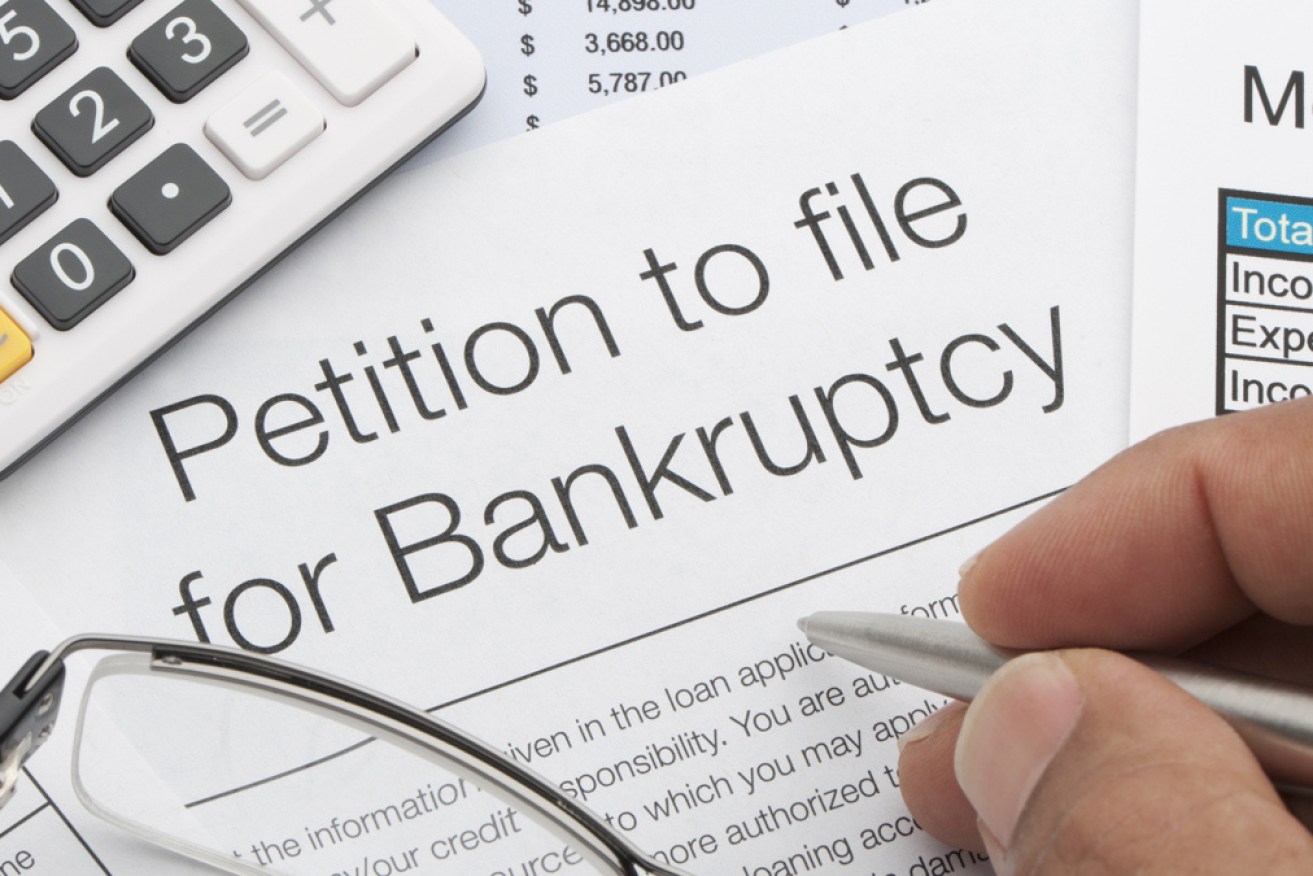The surprisingly small debts costing Australians their livelihoods


Debt collectors are able to start bankruptcy proceedings for surprisingly small sums of money. Photo: Getty
Hundreds of Australians face being forced into bankruptcy over debts as small as $5000, putting them at risk of losing their homes and more.
The low threshold for forced bankruptcy action means even small credit card debts could lead to financial ruin for many people.
The warning comes following new research showing the number of bankruptcy applications made by debt collectors grew in the past financial year.
Consumer Action Law Centre (CALC) chief executive Gerard Brody said the $5000 benchmark was “completely out of proportion” to the size of the debts in question.
“We think that limit is far too low,” he told The New Daily.
“We’ve suggested the limit should be $50,000.
“That would ensure bankruptcy would be used in cases of people who are hiding assets from creditors, and more of that high-end and fraudulent activity rather than your consumer debtor who has ended up in a hard patch and unable to pay their debt.”
CALC’s research found the use of bankruptcy applications by debt collectors had skyrocketed in the past year, led predominantly by Lion Finance, a company that made 512 bankruptcy applications in the 2018-19 financial year.
That represents an 83.5 per cent increase on the previous year, when Lion Finance made 279 applications against debtors.
By comparison, the Australian Taxation Office – which remains the largest user of bankruptcy actions – made only 543 applications in that same period, down 38.5 per cent from 883 the previous year.
Mr Brody said organisations like Lion Finance, which he argued are “disproportionately” using bankruptcy applications to reclaim debts, need to reassess the way they deal with debtors, and called on creditors to be more proactive in working with debtors to ensure repayments are made.
‘Misleading’ report misses the mark
While there is a case to be made for increasing the threshold, both the size of the increase and the scale of the overall problem are exaggerated by the CALC report, Australian Collectors and Debt Buyers Association chief executive Alan Harries told The New Daily.
“As at 30 June 2018, our members had $13 billion in debt purchased, and there were 2.74 million accounts. Even if we assume there were 1000 bankruptcy applications made across that, that’s only 0.035 per cent of accounts where bankruptcy has been used,” Mr Harries said.
Further, a bankruptcy application won’t necessarily result in a bankruptcy, and even when it does, it may not benefit the debt collector.
“Most debt collectors won’t engage bankruptcy action very often because it’s expensive, and it doesn’t necessarily mean they’ll get an account paid because bankruptcy is for insolvency issues. It’s not a debt-collection tool,” he said.
Nevertheless, Mr Harries said the $5000 threshold hasn’t changed since “around 2009” and increasing it in line with CPI or a similar measure wouldn’t be an unreasonable measure.
“The real argument to come from the CALC report is that the limit should be lifted, and that’s something I don’t think anyone in the industry would oppose if it was to a reasonable level,” he said.
$50,000 is a little bit of a stretch.’’
Alan Harries
Roger Mendelson, director of Mendelsons Lawyers and CEO of Prushka Fast Debt Recovery, said a $50,000 threshold would be “utterly crazy” and demonstrates a lack of understanding of the law.
“To go to bankruptcy, you need to have a judgement first. That means you’ve either had a hearing and the debtor has lost and still hasn’t paid, or there’s been a default judgement so they haven’t fought the case, so they’re given ample chance to represent their case,” he said.
“The legal system can only work when you can enforce a judgement.”
A higher threshold could mean credit providers would be less comfortable providing credit for small purchases too, Mr Mendelson cautioned, forcing consumers to pay upfront instead.








